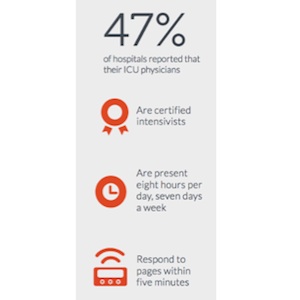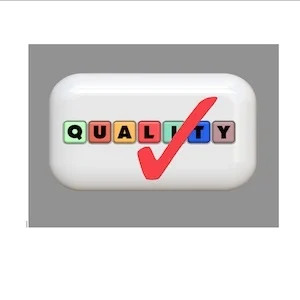In the move to value-based payment for U.S. healthcare, performance measures will increase in importance, and will focus on clinical quality, resource utilisation, clinical practice improvement and meaningful use of electronic health record technology. Current performance measures, however, often lack validity and interdisciplinary measures are needed across the care continuum, according to a forthcoming article in the Journal of Critical Care. Current measures do not address core aspects of critical care medicine.
Albert P. Nguyen, Department of Anesthesiology, Mayo Clinic, Rochester, MN, and colleagues have reviewed the U.S. National Quality Forum library of performance measures to ascertain what measures are relevant for critical care, and to expose gaps and opportunities for future performance measurement.
As at January 2016, the authors found just 10 performance measures pertaining specifically to critical care:
They advise that “caution is necessary before connecting the dots between trial results, guidelines, performance metrics, and payment.”
Process, outcome and structure performance measures should be considered, say Nguyen and colleagues. For example, patients to nurse ratio and high-intensity intensivist staffing have strong validation in the literature.
They conclude that refined performance measures will allow measurement of the effects of critical care medicine in the continuum of care and demonstrate the value of high-cost intensive care to critical care medicine physicians, their patients, and the public.
See Also: a Canadian Critical Care Knowledge Translation Network (aC3KTion Net)
The Leapfrog Group’s 2015 Hospital Survey shows that less than half of ICUs meet recommended standards - one or more board-certified intensivists on staff, exclusively providing care in the ICU, available for eight hours per day, seven days a week, and for intensivists to return calls within five minutes, 95 percent of the time.
Castlight Health’s analysis of the survey data showed that staffing standards varied by state. In no state did 90 percent or more hospitals meet the standard. In 2007 30 percent of hospitals met the standard, and in 2015 this increased to 47 percent.

Image credit: Pixabay (top); Castlight Health (above)
Albert P. Nguyen, Department of Anesthesiology, Mayo Clinic, Rochester, MN, and colleagues have reviewed the U.S. National Quality Forum library of performance measures to ascertain what measures are relevant for critical care, and to expose gaps and opportunities for future performance measurement.
As at January 2016, the authors found just 10 performance measures pertaining specifically to critical care:
- Risk-adjusted prolonged intubation
- Urinary catheter-associated UTI for ICU patients
- Central line catheter-associated bloodstream infection rate for ICU and high-risk nursery patients
- Blood culture timing for patients in the ICU
- ICU venous thromboembolism prophylaxis
- Severe sepsis and septic shock: management bundle
- Postoperative respiratory failure rate
- ICU LOS
- ICU: inhospital mortality rate
- ICU patients with care preferences documented
They advise that “caution is necessary before connecting the dots between trial results, guidelines, performance metrics, and payment.”
Process, outcome and structure performance measures should be considered, say Nguyen and colleagues. For example, patients to nurse ratio and high-intensity intensivist staffing have strong validation in the literature.
They conclude that refined performance measures will allow measurement of the effects of critical care medicine in the continuum of care and demonstrate the value of high-cost intensive care to critical care medicine physicians, their patients, and the public.
See Also: a Canadian Critical Care Knowledge Translation Network (aC3KTion Net)
ICU Staffing in the USA: Latest report from Leapfrog
The Leapfrog Group’s 2015 Hospital Survey shows that less than half of ICUs meet recommended standards - one or more board-certified intensivists on staff, exclusively providing care in the ICU, available for eight hours per day, seven days a week, and for intensivists to return calls within five minutes, 95 percent of the time.
Castlight Health’s analysis of the survey data showed that staffing standards varied by state. In no state did 90 percent or more hospitals meet the standard. In 2007 30 percent of hospitals met the standard, and in 2015 this increased to 47 percent.

Image credit: Pixabay (top); Castlight Health (above)
References:
Nguyen AP, Hyder JA, Wanta BT, Stelfox HT, Schmidt U (2016) Measuring intensive care unit performance after sustainable growth rate reform: An example with the National Quality Forum metrics. J Crit Care, 36: 81-4.
doi: 10.1016/j.jcrc.2016.06.009
Castlight Health; The Leapforg Group (2016) Intensive care unit physician staffing: data by hospital on nationally standardized metrices. Available from http://www.leapfroggroup.org/sites/default/files/Files/Castlight-Leapfrog-ICU-Physician-Staffing-Report-2016.pdf
Castlight Health; The Leapforg Group (2016) Intensive care unit physician staffing: data by hospital on nationally standardized metrices. Available from http://www.leapfroggroup.org/sites/default/files/Files/Castlight-Leapfrog-ICU-Physician-Staffing-Report-2016.pdf
Latest Articles
value-based healthcare, performance measurements, metrics, performance, quality improvement, critical care
In the move to value-based payment for U.S. healthcare, performance measures will increase in importance, and will focus on clinical quality, resource utilisation, clinical practice improvement and meaningful use of electronic health record technology. Cu










